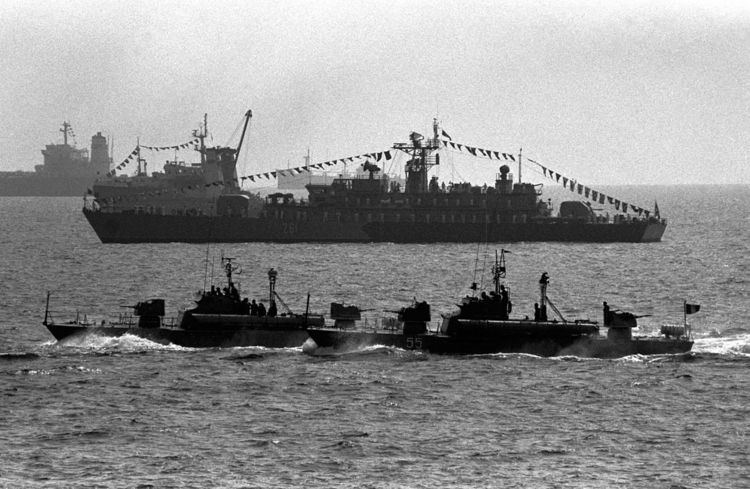Name Huchuan In commission 1966 | Builders Hutong Yard Shanghai | |
 | ||
The Type 025 class torpedo boat is also known as the Huchuan or Hu Chwan class, and it was once the backbone of the People's Liberation Army Navy (PLAN) in its confrontations with its much larger opponents in the Republic of China Navy. Although no longer serving as a frontline workhorse, this class is still quite active today. While relatively unsophisticated, it has enjoyed a surprising longevity on active service thanks to a particular philosophy within the People's Liberation Army Navy which has continued to favor its use.
Contents
Operational doctrine
In an era of increasingly effective countermeasures against anti-ship missiles, the countermeasures against torpedoes are relatively few and less effective in comparison, so although ineffective in open waters, torpedo boats can still play a role in coastal defense given sufficient protection. Their stealthiness and high speed are useful for surprise attacks on an enemy from coastal hideouts, such as caves, if the boats are integrated into an overall system that includes a supporting C4ISR structure, as well as shore defenses, aircraft, and larger ships. As a result of this philosophy, the production of Type 025 class torpedo boats lasted well into the 1990s, despite the fact that the retirement of early units of this class had already begun in the mid 1980s.
Variants
The Type 025 class was originally designed to solve the problems presented by existing Soviet torpedo boats in the Chinese inventory. The P 4 class torpedo boat (Type K-123) was lightly armed, and thus did not have sufficient self-defense firepower in a retreat after having launched its torpedoes. The P 6 class torpedo boat (Type K-183) had enough guns for self-defense, but its wooden hull was vulnerable to fire if hit. The Type 025 was subsequently developed to incorporate the advantages of both classes by adopting the metallic hull of the P 4 class and the heavier self-defense armament of the P 6 class. Several versions of the class exist, which differ mainly in their secondary armament. For example, some had extra guns in addition to the standard 14.5 mm heavy machine guns, while others had the capability to carry and lay two additional mines. Due to the different the weapons carried, the complement of each boat varies from 11 to 16. Structurally, some of the hulls have an additional pair of small hydrofoils near the bow, while others do not have hydrofoils at all. Guns are usually mounted aft, but some examples of the type possess one forward mounting and one aft. Although small batch orders continued into the 1990s, production had completely stopped by the early 2000s. At least half a dozen variants of Huchuan class have been confirmed in service with PLAN:
